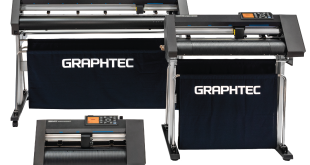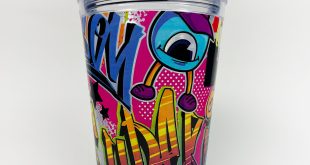
We are now living in a world where sustainability is at the forefront of everyone’s minds. From the banning of plastic straws to environmental campaigns such as Veganuary (look it up!), it seems you cannot avoid the subject. With regards to eco clothing, it is estimated that this industry is now worth $5 million a year, but why should you care? We speak to the industry experts to find out more.
Sustainability is very much a buzz word at the moment, says Kirsty Macdonald, brand manager at Mantis World. With online searches relating to sustainable fashion up 66% this year (data compiled by fashion search engine Lyst), a massive increase in the media reporting on the environmental impact of textile production and fast fashion, and major high street retailers committing to addressing their eco footprint, it’s safe to say we’re seeing a critical change in the way fashion is viewed.
The view point of the garment manufacturers is that sustainability has never been higher on the consumers’ agenda.
“Social pressure for sustainability has never been higher and it’s rising all the time,” adds Clare Dwyer, product manager at Kustom Kit. “Fast-fashion in particular, has drawn bad press in recent times, as this unsustainable business model has serious long-term implications for the environment.”
Jada Simone Li, brand marketing and business development at Continental Clothing Co. continues this line of thought: “As consumer awareness grows, the demand for eco-friendly clothing is growing much bigger. The future of the printwear industry will be much greener.”
Coming from a distributor’s point of view Larissa George, field sales executive at PenCarrie, says that although a lot of their clients are still focused on price, she has seen more enquiries for bamboo-based products, organic cotton and recycled clothing. “Promotional T shirts will always have a place in the market, however smaller online traders are wanting to push eco clothing and have a responsibility to know where and how the product was produced and the impact it has on the environment.” Larissa states that while out on the road she has started to see larger clients that are becoming concerned with eco clothing.
Nikki Webb, account manager at The Outdoors Company sides with this view point. “We have seen a sharp increase in demand for clothing for corporatewear, uniform, workwear and promotional use that is sustainable and ethically manufactured.” She adds that businesses from across the industry, including the automotive sector, financial and IT services, travel providers, media and entertainment agencies and logistics companies are all requesting clothing from premium brands that invest heavily in the design and manufacture of clothing that is kind to the environment, kind to people and their communities.
Choice, choice, choice
And, when it comes to eco clothing, there has never been so much choice. “Many brands have now found it more prudent to offer eco styles within their ranges and have made commitments to increase their positive social and environmental impacts,” explains Teri-Louise Deegan, marketing executive at Prestige Leisure.
The fact that brands such as Écologie by AWDis, Continental Clothing Co. and Mantis World that have committed fully to sustainability exist in the marketplace proves there is a consumer demand for eco clothing. There has also been a steady increase in the number of brands offering eco styles. Russell launched the Authentic Tee Pure Organic (108 and 108F) earlier this year, while Asquith & Fox released a dual style Organic Crew Neck Sweatshirt (AQ078 and AQ079) into the market. “This proves that there is enough desire from the brands to create sustainable products to match this wave of the environmental nouveau riche buyer,” adds Teri-Louise.
Why, why, why?
But why should you offer eco clothing to your customers?
Perhaps a better question should be why wouldn’t you want to offer this to your customers? With such a sea change happening right now in the industry, those who present eco clothing as an option to their customers could be perceived as being forward thinking and responsible, which could be beneficial when dealing with customers such as charities, schools or businesses with a history of social and environmental consciousness.

Andreas Gauer, trade marketing manager of Russell Europe, adds: “Shoppers do not distinguish between brands they buy at a store and printed T shirts. What counts is the quality and the manufacturing method underlying those products. Driven by ever stronger demand, garment decorators have to respond accordingly and adapt to change. Garment decorators have to raise retailer and shopper awareness about their products’ compliance with certain standards and demonstrate transparency in their manufacturing processes.”
You may have concerns over the manufacturing quality of eco garments, but as Clare suggests, clothing made by environmentally friendly means often turns out to be more robust and therefore provides greater longevity, factors which means customers will be willing to spend that little bit extra. And as Jada adds, there is no need to be concerned about the final print quality either: “The print surface is just as good to use as virgin fibres, so printers needn’t worry about quality control. Responsible clothing can still be affordable and the stigma that all things good for you cost so much more must end now.”
What, what, what?
So what aspects should you consider if looking to become a more sustainable garment decorator?
The number one consensus shared by the experts is that you should be aware of your supplier’s ethical and environmental policies, including industry-wide standards and certifications. These include; Oeko-Tex, OCS, GOTS, REACH, GRS, WRAP, SEDEX, BSCI, Bluesign and Fairtrade to name but a few. “These policies and standards will hold key information about your suppliers’ respective approaches to garment manufacture,” explains Clare.
Other suggestions include changing the way that you run your own print shop. Jada explains: “There is so much that garment decorators can do to swap out traditional consumables for eco-friendly alternatives. Low impact inks and emulsions and going chemical free would be the first step. Conserving energy during the production process and recycling all materials used such as dye sublimation paper would make a huge impact long-term. You can use 100% water-based or vegetable oil-based inks which still deliver great print quality. In the future you can look into using renewable energy, minimising water usage and reducing waste overall. Using carbon neutral paper and delivery methods are just a few ideas to practice being more sustainable.”
Larissa advises: “To become eco-friendlier in operation you should perhaps consider using recycled boxes, try to reduces the amount of polybags and plastic waste, recycle where possible, buy ethically sourced and sustainable products and use print consumables that have less chemicals such as water-based screen printing inks.”
Once all of this is done Andreas suggests seeking out information on options for certification at regular intervals and if these match the production methods and production proper you should obtain the necessary certifications for your business.
To conclude, Kirsty suggests that just as customers are asking decorators questions about sustainability, decorators should be encouraged to ask the same questions in return to the brands to not let sustainability standards slide.
Top tips
Dave Roper, managing director of Screen Print World, provides some top pointers for any garment decorator looking to become a little more environmentally-conscious.
• Use less harsh solutions when reclaiming your screens.
• Ensure you only use drain safe solutions.
• Invest into a dip tank, this means you can control waste.
• Use water-based inks over plastisol, as you can use water to clean up the screens.
• If you use plastisol, use low cure plastisols as they require less energy to final cure.
• If you’re doing a small run use a manual press, as less energy is being used than an auto.
• Check for Oeko-Tex class standards, or other ‘green’ certifications on your consumables.
• Be more aware of the energy used to produce the garment: turn dryers down or use them at the specified level, turn off the following if not being used dryers, drying cabinets, exposure units and flash cure.
• Changing from aerosol pallet spray to a water-based pallet glue will be more printer friendly and eco-friendly.
• Choose an electric dryer that can be powered by renewable and sustainable energy.
• Look to fit solar panels and use a grey water tank for screen reclaiming.
• Reuse all cardboard boxes and packaging.
 Printwear & Promotion The Total Promotional Package
Printwear & Promotion The Total Promotional Package




